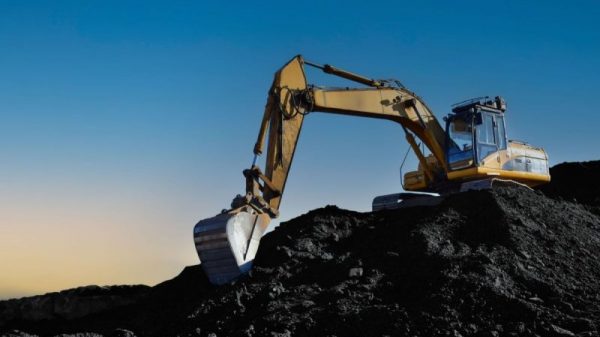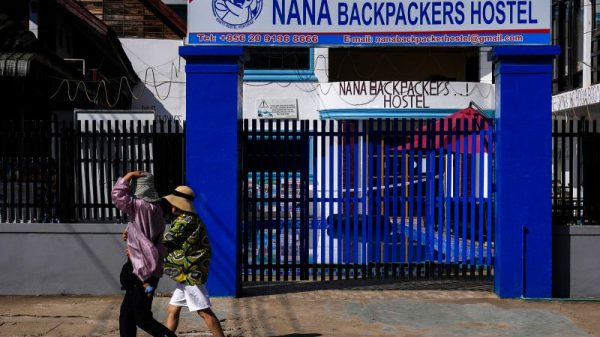Astrobotic Technology, the company that developed the first lunar lander to launch from the United States in five decades, said its spacecraft has suffered “critical” propellant loss attempting to correct itself after running into a major issue in space.
Just hours after launching from Florida toward the moon early Monday morning, the company announced the spacecraft was in jeopardy. The lunar lander, dubbed Peregrine, was unable to place itself in a position facing the sun, likely because of a propulsion issue, according to the company. The wayward orientation prevented the spacecraft from charging its batteries.
The battery issue was later resolved, but Astrobotic was not able to correct the apparent issue with the Peregrine lander’s propulsion system.
“Unfortunately, it appears the failure within the propulsion system is causing a critical loss of propellant,” Astrobotic said in a mission update posted just after 1 p.m. ET. “The team is working to try and stabilize this loss, but given the situation, we have prioritized maximizing the science and data we can capture. We are currently assessing what alternative mission profiles may be feasible at this time.”
That could mean the company will not attempt to land the Peregrine lander on the moon, as it was expected to do on February 23.
Later on Monday, Astrobotic shared the first image of the Peregrine lander in space. The photograph showed the outer layers of insulation on the vehicle were crinkled.
The distorted material was “the first visual clue that aligns with our telemetry data pointing to a propulsion system anomaly,” the company said in a post on the social media platform X at 4:12 p.m. ET. It was not clear whether the company was still considering a potential path toward the moon or was working to map out an alternative destination for the lander.
From launch to a lunar trajectory
Astrobotic was initially able to make contact with the vehicle after its 2:18 a.m. ET launch, but then the mission hit a snag that left the vehicle pointed away from the sun and unable to charge its battery.
In an update issued on social media on Monday, Astrobotic said that it believes the likely cause of the problem “is a propulsion anomaly that, if proven true, threatens the ability of the spacecraft to soft land on the Moon.”
Astrobotic initially said that the anomaly — an aerospace term for an issue or problem that threatens a mission — “prevented Astrobotic from achieving a stable sun-pointing orientation,” the company posted on X at 9:37 a.m. ET. It added that its engineers were troubleshooting the issue in real-time.
A sun-facing position is typically necessary to provide solar power for charging a spacecraft’s batteries.
Mission controllers then “developed and executed an improvised maneuver to reorient the solar panels toward the Sun,” according to the company.
That effort proved successful, Astrobotic said.
“The team’s improvised maneuver was successful in reorienting Peregrine’s solar array towards the Sun. We are now charging the battery,” the company said in an update posted at 12:34 p.m. ET.
Still, the company said it must correct the underlying propulsion issue. The spacecraft would need to use its onboard thrusters — and have enough propellant left over — to make a soft touchdown on the moon.
A successful first leg
The lunar lander, called Peregrine after the fastest bird in the world, appeared to have a wholly successful first leg of its trip after lifting off atop a Vulcan Centaur rocket developed by the joint Lockheed Martin and Boeing venture United Launch Alliance.
It was the first ever flight of a Vulcan Centaur rocket, a new vehicle from ULA designed to replace its older lineup of rockets.
The company confirmed just after 3 a.m. ET that the Vulcan Centaur performed as expected, delivering the Peregrine lunar lander into a trans-lunar injection orbit, according to ULA. That involves a precisely timed engine burn that pushed the Peregrine lander onto a path in Earth’s orbit that should allow it to sync up with the moon some 384,400 kilometers (238,855 miles) away.
The Peregrine lander was then expected to fire up its own onboard thrusters, using up to three maneuvers to pinpoint its path.
In a statement, Astrobotic said that Peregrine successfully began communicating with NASA’s Deep Space Network, activated its avionics systems, and “the thermal, propulsion, and power controllers, all powered on and performed as expected.”
“After successful propulsion systems activation, Peregrine entered a safe operational state,” the company said.
It was after that, however, that the Peregrine lander experienced the “anomaly.”
Peregrine mission stakes
Pittsburgh-based company Astrobotic Technology developed Peregrine under a $108 million contract with NASA. The vehicle was designed from the outset to be relatively cheap — aiming to fulfill NASA’s vision to reduce the cost of putting a robotic lander on the moon by asking the private sector to compete for such contracts.
“This really is like a 50-50 shots on goal kind of an approach — where it’s really more about the industry succeeding, not any specific one mission,” Thornton said.
Joel Kearns, the deputy associate administrator for exploration at NASA’s Science Mission Directorate, issued a statement Monday, saying, “Each success and setback are opportunities to learn and grow. We will use this lesson to propel our efforts to advance science, exploration, and commercial development of the Moon.”
In a statement, NASA added that it plans to continue sharing updates as more information becomes available and expects that the space agency’s administrator, Bill Nelson, will make remarks later today.
“It’s certainly going to have some some impact on our relationships and our ability to to secure additional missions in the future,” Thornton said. “It certainly wouldn’t be the end of the business, but it would certainly be challenging.”
If the moon mission fails, it could be a major loss not only for Astrobotic, but also for NASA and other countries and institutions with payloads aboard the Peregrine lander.
A loss of the lander so early in the mission would also mean that Astrobotic is not able to test the vehicle’s ability to land on the lunar surface.
On board the Peregrine vehicle are five scientific instruments from NASA and 15 other payloads from a variety of organizations and countries. The commercial payloads on the lander include mementos and even human remains that paying customers had paid to fly to the lunar surface.
In its update posted just after 4 p.m. ET Monday, Astrobotic said its Peregrine team has “been awake and working diligently for more than 24 hours.”
“We ask for your patience as we reassess incoming data so we can provide ongoing updates later this evening,” the statement reads.







































